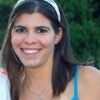Exploring the Final Frontier

This past Tuesday there was an amazing total eclipse that will not happen again until the year 2033. The Sun, Earth and the moon were all in alignment creating an eclipse, but what made this one particularly special, was that the moon was in perigee, meaning it was at the closet point to the earth. When the moon was fully in the Earth’s shadow it created a reddish hue from every sunrise and sunset around the world, which reflected off the moon’s surface. That’s an incredible moment to witness! An event like this, that only happens about twice in one person’s lifetime opens the curiosity for young people to begin developing an interest in Astronomy. It’s a great chance to get outside and look at the stars.
We need more young girls to be involved in sciences such as astronomy to advance technology and further our knowledge about the universe we live in. We should never stop asking questions like what else is out there? How does the universe work? Questions like these are what keep the science of astronomy alive. The technologies astronomers use, not only benefit the scientific community, but also benefit us in our everyday life. Everyday gadgets such as our cell phones and GPS systems were developed originally for astronomy. Telescopes and binoculars were both developed for space discovery, but this same technology is now used in many imaging machines in hospitals and airports.
The fields of science and math have been traditionally male dominated, and it’s about time we change this! A good start is to encourage young girls to take an interest in math and science. Both fields are extremely broad and can be broken down into many different careers, especially math which is used everywhere in daily life. Even the smallest interest in science should be pursued, because you never know what you truly like until you give it a try. The universe is a big place filled with millions of stars and planets that we have yet to fully explore. A girl you know, could be the one making a life-changing discovery! Here’s a great clip from our astronomer role model for a boost of inspiration!